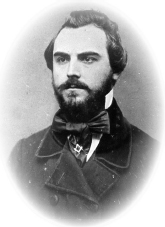CHAPTER NINE

We are Brought in Hearing of Artillery
Rodes’ men moved south from Carlisle along the main turnpike toward Baltimore. Their first stop was the village of Papertown, home to one of the largest paper mills in the North. The Kempton and Mullen paper factory stood along the banks of nearby Mountain Creek, which provided a reliable source of power for the machinery. Although the mill was not operating at the time, a large amount of paper was stored at the site.
The chance to secure high-quality paper for the army proved impossible for Ewell to pass up. Jed Hotchkiss noted in his journal that the general and some of his staff officers “stopped awhile to examine the extensive paper mill there.” Another officer from O’Neal’s Brigade recalled that he also “went in and saw more paper than I ever heard of before.” The visitors ordered the quartermaster department to seize more than $5,000 worth of paper. To the owner’s dismay, payment was made with nearly worthless Confederate scrip.1
Generals Rodes and Ewell continued leading the men from the division south through the mountains at Mount Holly, where they passed by another paper mill owned by Robert and Samuel Given. Despite intermittent rain, Jed Hotchkiss described the day as “quite pleasant.” Most enjoyable of all was the spectacular mountain scenery that greeted them along the way. Captain John Gorman from Ramseur’s Brigade noted that he had “never seen, in all my travels, a more lovely spot than Mt. Holly Gap.” He declared that “its picturesque beauty and grandeur must be seen to be realized.”2
Their route carried them to Petersburg, the site of the famed York Sulphur Springs resort. Following a short break, the men were once more on the move along the turnpike toward Baltimore. “We had no idea of our destination,” a Georgia veteran recalled. “We knew we were going in a southeasterly direction and on a forced march, and that, too, on a most intensely hot day.” To their surprise, they proceeded only about three-quarters of a mile before turning onto the main road running southwest. That highway served as the primary connection between the state capital at Harrisburg and the crossroads town of Gettysburg.3
Following an uneventful trip of some 18 miles, Rodes’ men finally stopped for the night just northeast of Gettysburg near Heidlersburg. Early’s Division arrived soon afterward from York and halted along the banks of Plum Run about three miles east of Rodes. Ed Johnson and his division camped more than 20 miles away on the western side of South Mountain near Scotland village and would not rejoin the rest of the corps until early the next evening. After pulling back from the immediate vicinity of Harrisburg, Jenkins’ troopers only made it as far as Petersburg before halting during the early morning hours on July 1.4
The rest of Lee’s Army of Northern Virginia remained a good distance away from Ewell’s Second Corps. The divisions of Richard H. Anderson and Dorsey Pender from A. P. Hill’s Third Corps, together with all three divisions from James Longstreet’s First Corps, were still on the far side of the Cashtown gap along the road between Chambersburg and Greenwood. Henry Heth’s Division (Hill’s Corps) was in camp near Cashtown. Earlier in the day on June 30, one of Heth’s brigades carried out a brief reconnaissance eastward in the direction of Gettysburg. Plans were already in the works for Heth to return there the following morning.